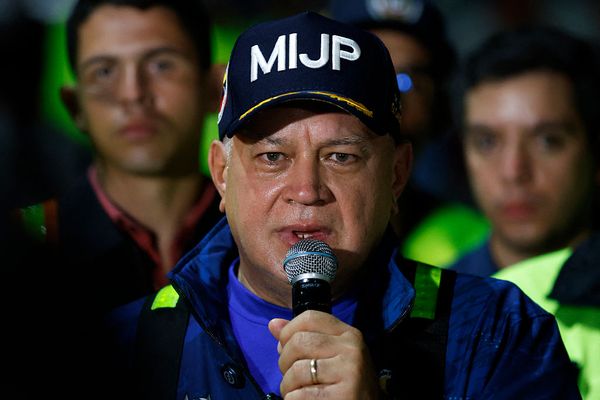
When Bob Hawke decided to host a summit in Canberra on the economic future of Australia, shortly after his election as prime minister in 1983, most thought it was a window-dressing gimmick by the flamboyant showman politician. “This consensus is bullshit,” the New South Wales Labor premier Neville Wran declared. “It won’t work.”
But it did.
Hawke had been elected on Labor’s promise of “reconciliation, recovery and reconstruction”, which was diametrically opposed to the confrontationist policies of the Coalition government. The nation was ready for change, and what might have been a window-dressing gimmick made things possible that had once been unimaginable. It nurtured the seeds of the policymaking and investment that grew to transform Australia.
Sign up: AU Breaking News email
While we can now see that some of the eventual costs were too high, at the time it changed the national climate, consensus and tripartite became the new buzzwords. There was a sense of possibility in the air.
Ever since, Labor politicians have played with the model. The treasurer, Jim Chalmers, is a student of history and picked up the baton to bring together people and organisations with opposing views to hear each other out and be heard by those not in the room. A crucial element is the being heard, of making public what would otherwise be private conversations by lobbyists about the desires and demands of their clients.
Once it is in the open, even if hedged in bureaucratic and corporate language, the challenge is finding the middle ground that satisfies enough to provide a stable foundation. This was where Hawke excelled. A lifetime of finding tolerable settlements to intractable industrial disputes made him a master of the nuanced agreement. As his speech writer Graham Freudenberg noted: “He actually believed his own rhetoric.”
It helped that there was a real crisis. Unemployment was soaring, industrial production was plummeting, markets were collapsing, strikes were frequent, the rigidity of tariff-fortified Australia that had once served the country well had become a liability.
The challenges facing the most recent bunch of Labor leaders to call an economic summit are different, but not less. Indeed, if you look past the moderately pleasing interest rate, unemployment, growth and GDP numbers, there is an existential tsunami building on the horizon – climate change, policy paralysis, geo-political realignments, militarisation, digital colonisation and intergenerational “bastardry”.
The Labor governments elected this century have not come carrying too many hard-to-keep promises, rather they have entered office vowing to redress some of the most egregious wrongs of their predecessors – sign the Kyoto treaty, apologise to the Stolen Generations, investigate Robodebt, accept the Uluru Statement. Most importantly, they were Not Howard, Not Morrison, Not Dutton (Trump).
Crafting an agenda and an idea of the nation that is forward-looking is now the challenge. The treasurer has urged boldness; the prime minister is by nature more cautious.
As soon as the roundtable was announced the ideas started flowing. The Productivity Commission, business groups, state and local governments, unions, thinktanks, major companies and small, university researchers and ordinary punters, all had suggestions to share. Some, like taxing the family home, were so provocative they were ruled out before getting past the submission line, others fostered debate, others generated spectacular side shows that threatened to flame out before a consensus could be reached, and others were mired in obfuscating detail.
Not since Kevin Rudd’s ill-fated 2020 Summit have so many ideas been set loose on the land. Corralling them into a plausible narrative is the key – something that goes beyond the drafting of possible outcomes that every conference organiser does.
Chalmers has made no secret of his admiration for Abundance, the book by Erza Klein and Derek Thompson that forensically examines the ways the overlay of bureaucracy and compliance have hindered development in the United States and sold short those in most need. The detailed descriptions of an almost impossible to meet compliance regime have triggered a “me too” response here, and a hunt for regulations that might be abolished in pursuit of productivity improvements, more houses, more approvals, more innovation, more profit.
This is a worthy task, but I worry that it is like putting lipstick on a dinosaur. The beast is still a dinosaur. What is needed is a lens not a list; productivity is important but it is a retrospective measure.
Klein and Thompson address this specifically: “What we are proposing is less a set of policy solutions than a new set of questions around which our politics should resolve. What is scarce that should be abundant? What is difficult to build that should be easy? What inventions do we need that we do not yet have?”
In an Australian context I would add, “What sort of economy do we want? How can we make it more “complex”? How can we move from being so dependent on mining? What comparative advantages do we have? How can we maximise our human capital and improve quality of life? How can we improve intergenerational equity?”
As Ken Henry, Ross Garnaut and Rod Sims, some of the wisest policy brains in the country, have been saying in relation to the energy transition and the need for consistent environmental policies, first there is a need to better define the core purpose. Once the principle is agreed the objects, goals and actions can fall, or be negotiated, into place. Then we might be able to answer what a successful Australian economy in 2050, true to our abiding ethos of a fair go, might look like.
Julianne Schultz is the author of The Idea of Australia







